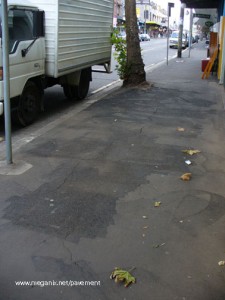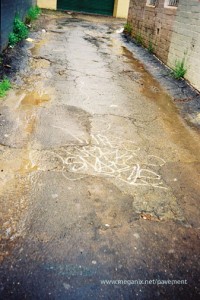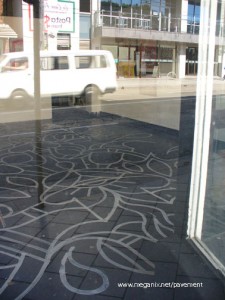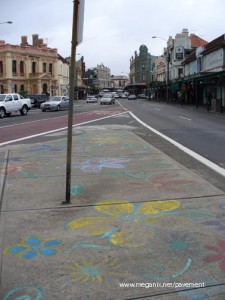 I wonder how many people know the story behind the coloured flowers on the traffic island at Newtown Bridge? They were originally painted during a day-long Reclaim the Streets party in November 1999, but if that were the whole story they would have worn off long ago. In fact, these flowers were deliberately preserved by friends of Kathy Jones.
I wonder how many people know the story behind the coloured flowers on the traffic island at Newtown Bridge? They were originally painted during a day-long Reclaim the Streets party in November 1999, but if that were the whole story they would have worn off long ago. In fact, these flowers were deliberately preserved by friends of Kathy Jones.
Kathy was an artist who worked with advocacy groups for disadvantaged people in the Newtown area. On the day of the Reclaim the Streets demo it was Kathy who organised the decoration of roadways, kerbs and traffic islands at the intersection of King Street and Enmore Road. Â Just a few months later Kathy died. Her friends tied notices to the light poles to let local people know she had gone and coated this particular set of painted flowers with marine varnish. My photograph was taken in 2005 when regular applications of varnish had kept the bouquet fresh for six years. In 2009 the flowers, while still visible, are gradually fading away.
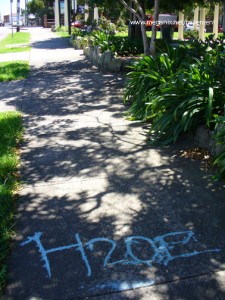 Dribble and splash are becoming more common as ways of writing pavement graffiti. H2OE was busy making large and small versions of his watery mark around
Dribble and splash are becoming more common as ways of writing pavement graffiti. H2OE was busy making large and small versions of his watery mark around 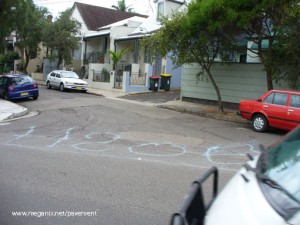
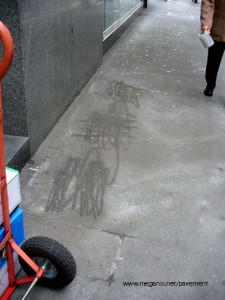 Over the years I have found York Street in the CBD to be a very fruitful site for pavement observation. Last week I spotted this line of scribbles near Barrack Street. These scribbles are not meaninglessÂ
Over the years I have found York Street in the CBD to be a very fruitful site for pavement observation. Last week I spotted this line of scribbles near Barrack Street. These scribbles are not meaningless 